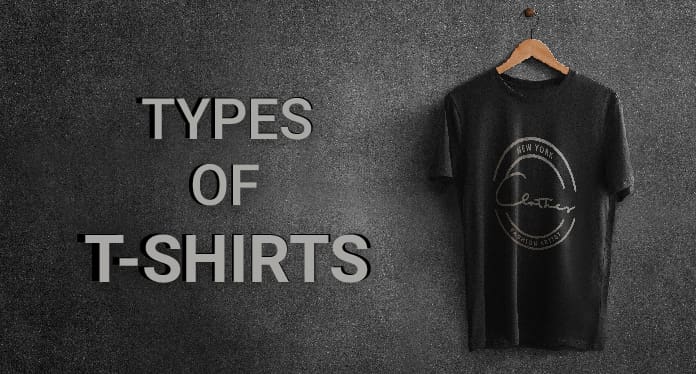Levi’s, the iconic denim brand that has woven itself into the fabric of American culture and beyond, did not achieve its widespread popularity by accident. Founded in 1853 by Levi Strauss, a German immigrant who had moved to San Francisco during the gold rush, this brand quickly became synonymous with quality workwear. This was largely owing to an innovative design – riveted jeans – that transformed the face of clothing for laborers. Over time, however, Levi’s transcended its workwear roots and became a globally recognized fashion staple.
The journey of Levi’s from a humble dry goods business to an internationally acclaimed fashion label is marked by strategic positioning and a keen understanding of cultural trends. The brand strategically leveraged various elements such as music, celebrity endorsements, and zeitgeist movements to resonate with consumers across different eras and demographics. At the same time, it has continuously evolved its product offerings without compromising on its core values or heritage.
How did Levi’s become so popular?
This introduction will explore these factors in detail to understand how Levi’s cemented its place in global popular culture.
1. The Emergence of a Denim Brand
It’s incredible how a simple denim brand took the world by storm, isn’t it? Levi Strauss & Co., commonly known as Levi’s, has undergone an intriguing journey in terms of its denim evolution.
It all started with a unique manufacturing process that focused on quality and durability, setting them apart from their competitors right from the start. The company managed to stay ahead of denim trends while adhering to the timeless appeal of classic jeans, which played a significant role in attracting a broad consumer base.
However, like any other globally recognized brand, Levi’s faced certain controversies about labor rights and environmental issues over time. Despite these challenges, they have demonstrated resilience by constantly adapting to changing market dynamics and fashion trends — solidifying their status as one of the most popular denim brands worldwide.
2. Innovative Design and Quality
Through inventive design and unwavering quality, the iconic denim brand managed to carve a niche for itself in the global fashion industry. Levi’s became synonymous with material durability, ensuring their jeans could withstand daily wear-and-tear while maintaining an appealing aesthetic.
The evolution of their designs also played a significant role in their rise to popularity; from classic straight-leg cuts to stylish skinny fits, they continually adapted to changing fashion trends without compromising on comfort considerations. This adaptability was largely aided by advanced tailoring techniques which allowed them to create products that not only looked good but felt great too.
Moreover, style versatility saw Levi’s transition seamlessly between casual everyday apparel and more dressy occasions, providing customers with suitable options regardless of event or seasonality. Ultimately, it was this innovative approach towards design and quality that set Levi’s apart in a saturated market – securing its status as one of the most popular brands today.
3. Brand Positioning and Strategy
Levi’s has successfully established itself as an iconic denim brand on a global scale by implementing a well-thought-out brand positioning and strategy. The company adopted a market penetration plan that involved providing top-notch jeans at competitive prices, building strong brand loyalty through consistent quality, and maintaining a unique style.
The pricing strategy aimed to reach a wide audience, ensuring accessibility for all demographics while preserving the brand’s aspirational status. Levi’s effectively became a timeless symbol while staying in tune with modern trends, striking a balance between fashion and functionality.
Through adept advertising techniques, Levi’s has consistently connected with evolving consumer tastes and societal values. This strategic approach not only solidified their position in the market but also cultivated a steadfast consumer base worldwide, contributing significantly to their enduring popularity.
4. Cultural Influence and Zeitgeist
The profound cultural influence and zeitgeist of this renowned denim brand is a testament to its enduring allure, shaping fashion norms and reflecting societal trends over many generations. Denim’s symbolism as the fabric of rebellion and individuality aligns perfectly with Levi’s ethos, making it a favorite among countercultures and mainstream societies alike.
Through astute zeitgeist analysis, Levi’s has adeptly navigated through various cultural shifts, consistently emerging at the forefront of evolving fashion trends. It was not just about selling jeans; it was about encapsulating the spirit of the times in their designs and marketing strategies.
The pop culture impact that Levi’s has had cannot be underestimated either – from rock stars to movie icons, influencers to everyday individuals, everyone donned these iconic blue jeans becoming symbols of coolness and casual chic themselves. This undeniable resonance with popular culture coupled with an ability to adapt quickly to changing consumer preferences have cemented Levi’s status as a timeless style staple across ages and geographies.
5. International Expansion
Levi’s expanded its presence globally by using a unique retail strategy, aiming to connect with diverse customer preferences around the world.
In the ever-changing world of fashion, adapting to different markets was essential for success. Levi’s successfully addressed challenges related to cultural differences, varying consumer behavior, and different economic conditions by employing effective localization tactics.
These strategies involved customizing products to suit local tastes, integrating regional styles into their designs, and adjusting pricing strategies based on purchasing power. Levi’s international success is not only due to its timeless appeal but also stems from its dynamic approach in understanding and adapting to new markets.
6. Celebrity Endorsements and Collaborations
Levi’s has benefited greatly from teaming up with celebrities and forming strategic partnerships. The celebrities associated with Levi’s not only have widespread appeal but also embody the brand’s rebellious spirit and unique style. This careful selection of endorsers has played a crucial role in shaping Levi’s identity and expanding its market presence.
In today’s fashion landscape, where trends are influenced not only by on-camera appearances but also by what celebrities wear off-camera, the impact of celebrity endorsements on customer preferences is undeniable. Collaborations have also played a significant role in broadening Levi’s product range. This includes limited-edition items created through partnerships with streetwear brands or renowned designers.
These collaborations bring fresh perspectives and unexpected twists to classic Levi’s pieces, making them even more appealing to consumers who follow the latest trends. The success of these collaborations is evident in both increased sales numbers and the buzz they generate on social media. This solidifies Levi’s popularity across diverse demographics worldwide.
7. Sustainability Initiatives and Social Responsibility
Levi’s commitment to eco-friendly production is evidenced by their extensive use of recycled materials in the manufacturing process, thereby significantly reducing waste. They’ve taken a proactive stance on water conservation, implementing innovative techniques such as Water which reduces up to 96% of water used in denim finishing.
By endorsing fair trade practices, they ensure that workers throughout their supply chain are treated with respect and dignity while receiving equitable wages. Furthermore, Levi’s community engagement programs underscore its dedication to making a positive impact globally; these include projects aimed at improving access to education and healthcare for vulnerable populations.
These sustainable actions have not only strengthened Levi’s reputation but also resonated deeply with environmentally-conscious consumers worldwide, bolstering the brand’s popularity exponentially.
Frequently Asked Questions
How has Levi’s adapted to the rise of online shopping and e-commerce?
Levi’s adapted to the rise of online shopping by implementing digital strategies and e-commerce innovations. They increased their online customer engagement, used social media marketing effectively, and promoted sustainable online shopping. This way they managed to continue reaching customers even as more people started buying clothes online.
What are some of the major challenges Levi’s has faced over the years and how did they overcome them?
One major challenge Levi’s faced was market saturation, with many competitors offering similar products. They overcame this through brand resilience and competitive strategies such as product innovation and improved supply chain management. By consistently delivering high-quality jeans and diversifying their range to include trendy designs, they retained their popularity among consumers.
How has Levi’s managed to maintain its popularity across different age groups?
Levi’s has maintained its popularity across different age groups through a mix of brand loyalty, effective marketing strategies, high denim quality, continuous product innovation and celebrity endorsements. Their durable jeans appeal to all ages while their innovative designs keep them relevant in changing fashion trends. Plus, the company is often associated with iconic figures which helps boost its image among consumers.
What role has technology played in the evolution of Levi’s as a brand?
Technology has played a key role in Levi’s evolution. They’ve used denim innovation and technological collaborations to create sustainable practices, like recycling water during production. Digital marketing strategies have expanded their global reach. Also, AI integration helps them understand customer preferences better, leading to improved products and sales.
How did Levi’s navigate the shift in fashion trends towards athleisure and casual wear?
Levi’s navigated the shift towards athleisure and casual wear through brand evolution, product diversification, fashion collaborations, sustainability efforts, and celebrity endorsements. They expanded their line to include more comfortable options like joggers and leggings while still maintaining their iconic denim styles. Collaborations with popular brands kept them on-trend and relevant in today’s market. Their commitment to sustainability attracted conscious consumers, and celebrity partnerships boosted their visibility.
Conclusion
Levi’s became successful by combining innovative design, quality products, strategic branding, and cultural influence. The brand expanded globally and gained popularity through celebrity endorsements and collaborations. Levi’s discounted deals for both new and existing users have also played a significant role in making it a popular choice in the fashion segment. The brand’s commitment to sustainability and social responsibility aligns with modern consumers’ values, contributing to Levi’s ongoing growth and iconic status in the fashion industry.





